2009 Nissan 370Z - Click above for high-res gallery
The first Datsun 240Z rolled into American showrooms in 1969. Four decades later, we've got our hands wrapped around the thick, leather, multi-function steering wheel of its direct descendant, the all-new 370Z. With a 332 hp V6 and a six-speed manual transmission directing power to the rear wheels, our outlook is decidedly positive as we head out on the street (our First Drive on the track was back in December). Is all of the hype surrounding this new coupe justified? How does it compare to the GT-R? Just how did the all-new Z-car fare after a week in our garage? Find out after the jump...
Photos copyright ©2009 Drew Phillips / Weblogs, Inc.
Our test model had been plunged in a bath of Monterey Blue paint at the Tochigi, Japan production facility and with a tint of metallic in its reflection, the all-new for 2009 coupe looks stunning with its shorter wheelbase and wide stance. Still instantly recognized as a "Z," the aluminum and steel sheet metal is wrapped aggressively around Nissan's "front midships" (FM) platform, shared with the Infiniti FX and G37 family. From the toothed front grille to the flared rear fenders, the styling leaves little doubt about its intended sports car mission. With more than a passing resemblance to the Nissan GT-R, the 370Z lures stares and thumbs-up from pedestrians, and stoplight competitions from boy racers.
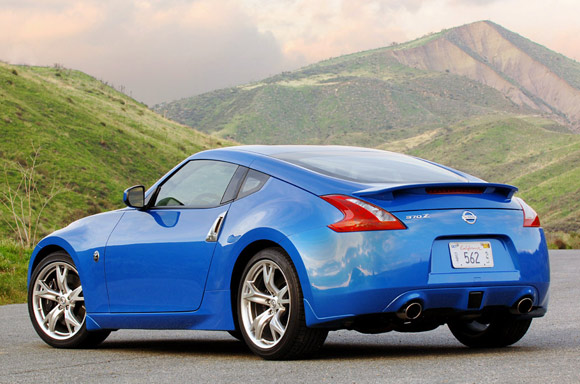
The interior of the 370Z is just as impressive. Forget everything you knew about the questionable 350Z interior – the 370Z is nice enough to wear an Infiniti badge. Top rate upholstery, plastics, and synthetics exist in abundance within the cozy cockpit. There is storage (or an optional NAV system) above the audio system. The three-pod IP, with three more gauges center-mounted high on the dash, is just about perfect. Unfortunately, the earned grade drops two full letters with the inclusion of that terrible fuel/coolant temperature mess on the far left. While it looks really poor in pictures, it's even worse in practice as the slightest bit of ambient light washes it out (or you find yourself mindlessly counting the remaining dots on the fuel gauge).
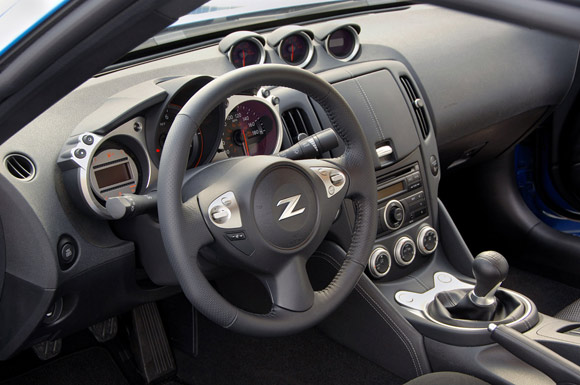
This writer's six-foot two-inch frame fit comfortably into the supportive and nicely bolstered cloth seats. The cabin accommodates two with abundant legroom, headroom, and shoulder room. The steering wheel is meaty, and all controls fall readily to hand without a hint awkwardness. Our tested was lightly optioned (at $34,055 it was only fitted with the sport package, floor mats, and splash guards), yet it didn't feel stripped-down or budget-rate. From the driver's seat, the only real drawback – outward visibility – is blamed on the exterior styling. The view of the outside world is hampered by the massive C-pillars just behind the ears, the tiny slit of a rear window, and the oversized exterior mirrors that seem to occupy more than their share of the front quarter visibility. It take several days to acclimate to the sight restrictions, but it does become bearable.
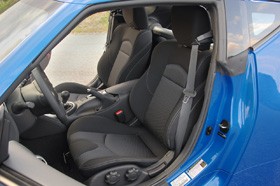
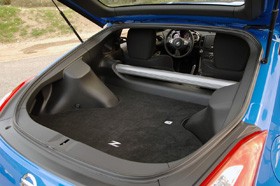
Nestled under the alloy hood of the 370Z is another one of Nissan's familiar VQ powerplants: the all-aluminum VQ37VHR. In Z configuration, it's rated at 332 hp and 270 lb-ft of torque (the identical powerplant under the hood of the G37 is rated at 330 hp and 270 lb-ft, but the Infiniti coupe lugs around another several hundred pounds of weight). Our test model was fitted with a six-speed manual transmission (a seven-speed auto is available) sending power to the rear wheels through a viscous limited-slip differential. An aluminum double-wishbone suspension sits up front, while the rear wheels are kept in check through an independent multi-link setup. Four beautifully-crafted lightweight forged RAYS wheels – some of the most attractive alloy from any OEM – are pushed into each corner. The fronts are wrapped in 245/40-19 tires, with the rears boast meaty 275/35-19 rubber. An extensive use of aluminum throughout (hood, doors, rear hatch, subframe components, etc...) has kept weight down to about 3,250 pounds.
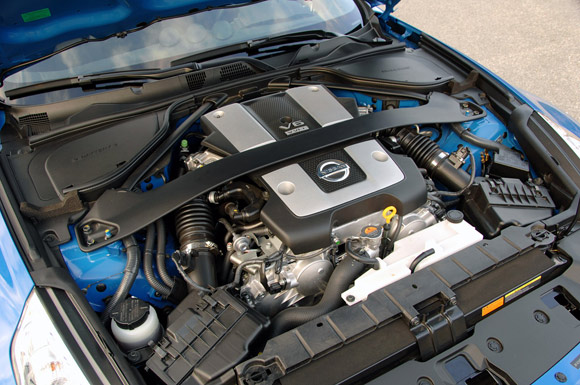
The 370Z features the first-of-its-kind, and all-new, SynchroRev Match system for the manual transmission. Greatly simplified, the throttle is automatically blipped, putting the engine speed precisely where it needs to be when the clutch is reengaged during downshifts. While it does make an occasional erroneous decision (move the stick shift above second gear at highway speeds and it will scare your large intestines empty), its ability to nail every single downshift flawlessly is uncanny. It does exactly what it is supposed to do the manual transmission... but... maybe it shouldn't?
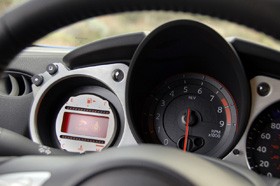
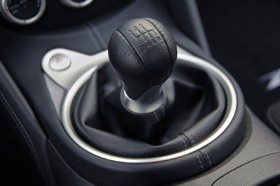
Quite frankly, something seems just a bit off kilter. The standard transmission elitists among us begrudgingly smiled as the electronically-controlled slush box caught up to the smoothness of a well-shifted manual. We looked the other way when it matched the manual's fuel efficiency and kept grinning even when it was obvious that an automatic could be quicker in a sprint. None of this mattered, as our traditional third-pedal manual transmission was left virtually untouched. Now, this brilliant new automotive technology is encroaching on sacred ground by replacing a time-honed skill (aka rev-matching) with a microchip. Is this no longer considered a "manual" transmission? Where do we draw the line? With a sigh of apprehension, we'll exonerate Nissan this time as the system may be completely defeated at the touch of a button – thankfully.
Nissan doesn't quote acceleration times, but most honest print rags are finding the 370Z hits 60 mph in about five seconds. As expected, it feels quicker than the 350Z. In our unofficial (and non-abusive) testing, we snapped off a 5.1 second run without much effort (our GT-R did 3.5 seconds flat with the identical testing equipment, but with launch control). The limited-slip rear end hooks up well, and a blinking shift light helps the driver stay out of redline above 7,500 RPM. The 370Z will pull away from its cousin, the Infiniti G37 Coupe, but it won't take a BMW's 135i in a drag race (especially if the German is fitted with a chip).
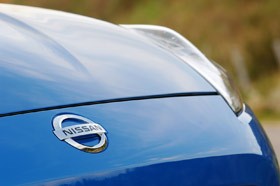
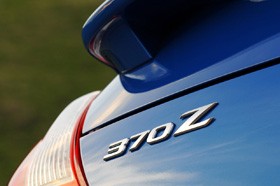
We put about 700 miles on the blue Z over a one-week period. Aside from the inherent inadequacies of owning a two-seat coupe with a family (the GT-R is a 2+2, so it deftly handles carpools in a pinch), the 370Z proved capable and well-suited as a daily driver with only a few minor irritations. First, while the cabin is well insulated from wind noise, it seriously resonates from tire drone. At speeds above 70 mph, or on any unfriendly pavement, the roar nearly drowns out the audio system. Our second gripe is with cargo space. While Nissan moved the rear cargo brace forward, the trunk is still extremely shallow. You may get a framed carry-on bag in there, but everything else will have to be soft if it's going to fit.
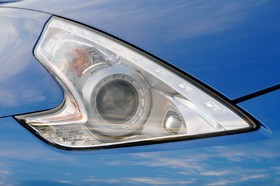
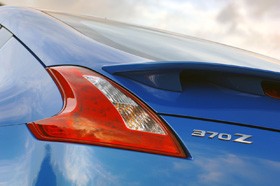
During our obligatory 200-mile day trip across the LA basin, the Z proved comfortable in traffic as the 3.7-liter pulled from low on the tachometer, limiting the amount of leg work needed on the clutch. The engine makes a nice growl at idle, but it's quickly lost once the engine spools and the mechanical noises up front drown out the two resonators in the rear (we are still waiting for VQ-equipped Nissan product with an impressive exhaust note). Although it never lets us down, the VQ engine isn't known around these circles for smoothness either. This character trait is immediately apparent once the tach speeds past 4,500 rpm and the stick shift starts really trembling. By 6,000 rpm, it's vibrating like a blender full of margarita mix and square ice cubes. The VQ wins countless awards, but it will never be confused with a smooth-running inline- or flat-six.
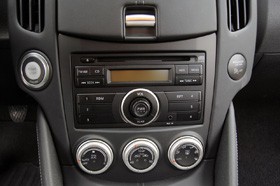
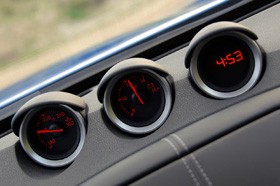
At open highway speeds, the 370Z is more stable than most cars are sitting still in a parking lot. It's an amazing trait considering the short wheelbase and wide tires. We don't know if credit goes to the low drag numbers, near absence of lift, or the exhaustive chassis tuning. Whatever it is, Nissan needs to ensure they don't let it slip away as it adds a layer of confidence that is often absent in cars costing five-times as much. Straight-line stability is one thing, but the true assessment is found on the corners.
State Route 23 (aka Decker Canyon Road) kisses the Pacific Ocean on its southern end, and then winds steeply up the mountain as it makes its way inland. Banned to vehicles with more than two axles, the first ten miles of the freshly-paved road delivers more twists than a full season of Desperate Housewives. Not as popular as Mulholland Drive (or as crowded), it is an excellent place to wring the guts out of a small sports car. It also happens to be the identical road that faced its sibling -- the Nissan GT-R -- last summer.
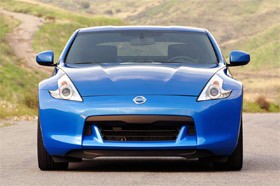
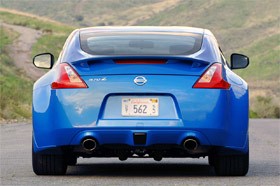
Without a doubt, the GT-R is quicker and more surefooted of the two, especially on the public canyon road. It will easily distance itself from the hapless 370Z (to be expected – especially at nearly triple the price). With electronic subsystems manipulating nearly every moving part, the GT-R claws at the pavement and puts the power down perfectly. The 370Z is lacking nearly all of the masterful processing power and electronic trickery of the flagship, so it relies on its much lighter curb weight and immense cornering grip to try to play in the same league.
As a result, the 370Z delivers a more hands-on (and challenging) driving experience than the GT-R. Don't get us wrong, it still isn't as intimate as a Porsche Cayman or Boxster (at double the Nissan's price), but it does give you the close aural feedback that Godzilla retains at an arm's length. Bolted to an amazingly rigid platform, the non-adjustable Z suspension is tight, but there is still noticeable body roll in the corners and nose dive under braking (the Nissan would brush its lower splitter on the asphalt into a tight banked uphill turn). Under throttle, and with a slight flick of the wrist, the rear wheels can easily be coaxed to step out if the overly cautious stability control is switched off. The steering feel and ratios are both good, and the transmission gearing works well. The oversized aluminum-caliper multi-piston brakes (from Akebono, not Brembo) feel like they can stop world hunger.
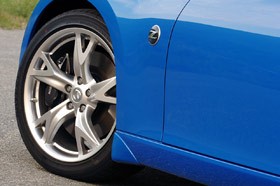
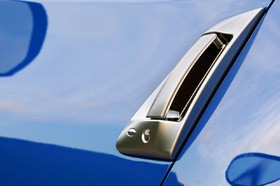
Parked after a hot run, the new 370Z sits patiently in the shade. The silence, only broken by the metallic ticking of the exhaust components as they discharge retained heat, offers no hint as to the contention in the growing coupe segment. New import competition from below arrives in the form of the Hyundai Genesis Coupe, undercutting the Nissan's price by thousands. Sitting just above, with a sticker too close to be comfortable, is the family's own Infiniti G37 Coupe. Of course, there will always be the comparisons to the Ford Mustang, Chevrolet Camaro, Porsche Cayman, Chevrolet Corvette, and even the Nissan GT-R. There is much to worry about, especially as customers vanish in today's economy.
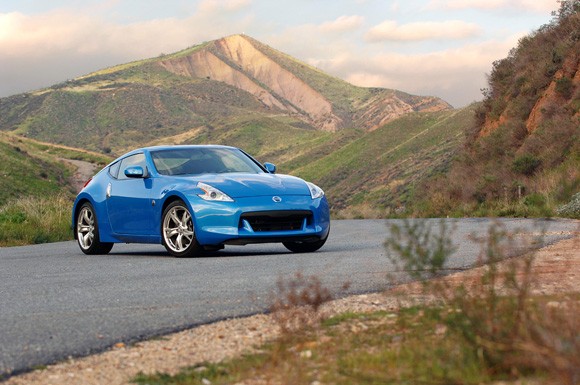
Without question, the all-new 370Z is undeniably much more exceptional than any model preceding it. However, the Nissan isn't going to sell itself on a test drive. Fifteen minutes behind the wheel simply isn't long enough to appreciate the power of the engine, the balance of the suspension, or the poise of the chassis. The 370Z improves, and becomes more confidence-inspiring, as time is spent in the driver's seat. While the sixth-generation Z-car isn't exactly the sports car to dethrone all others, at this price point, few others can touch its performance.
Photos copyright ©2009 Drew Phillips / Weblogs, Inc.
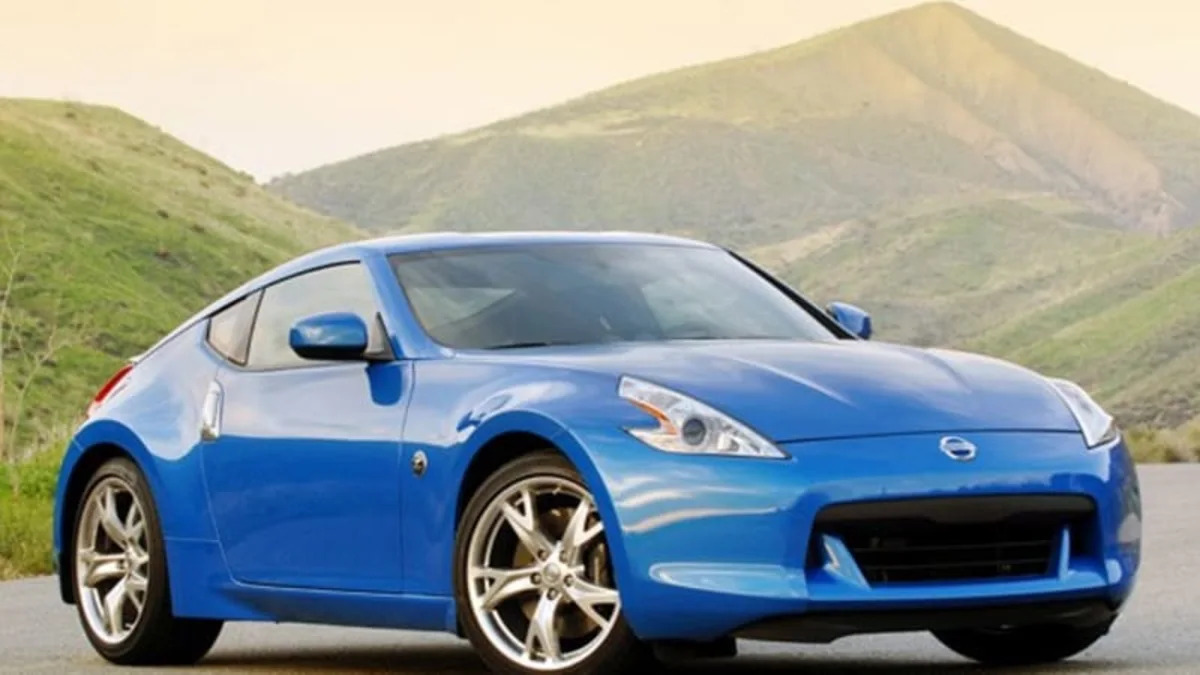


Sign in to post
Please sign in to leave a comment.
Continue